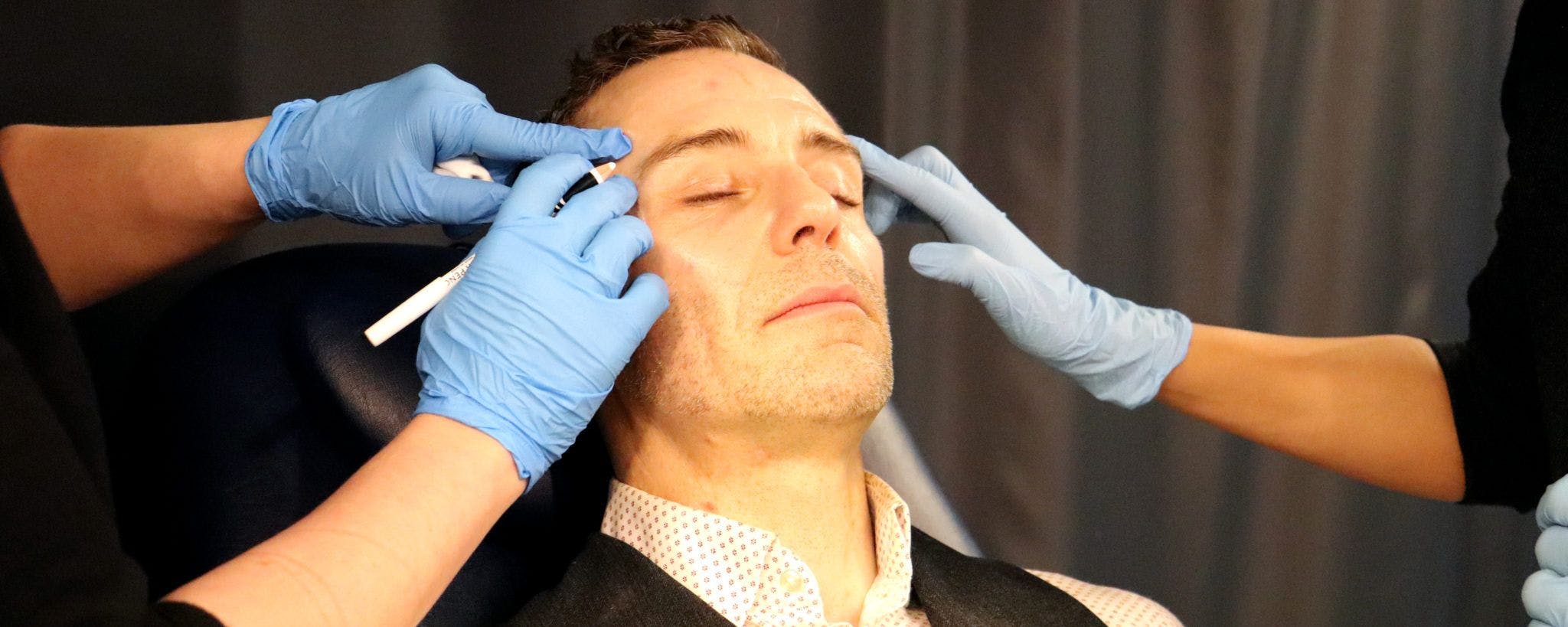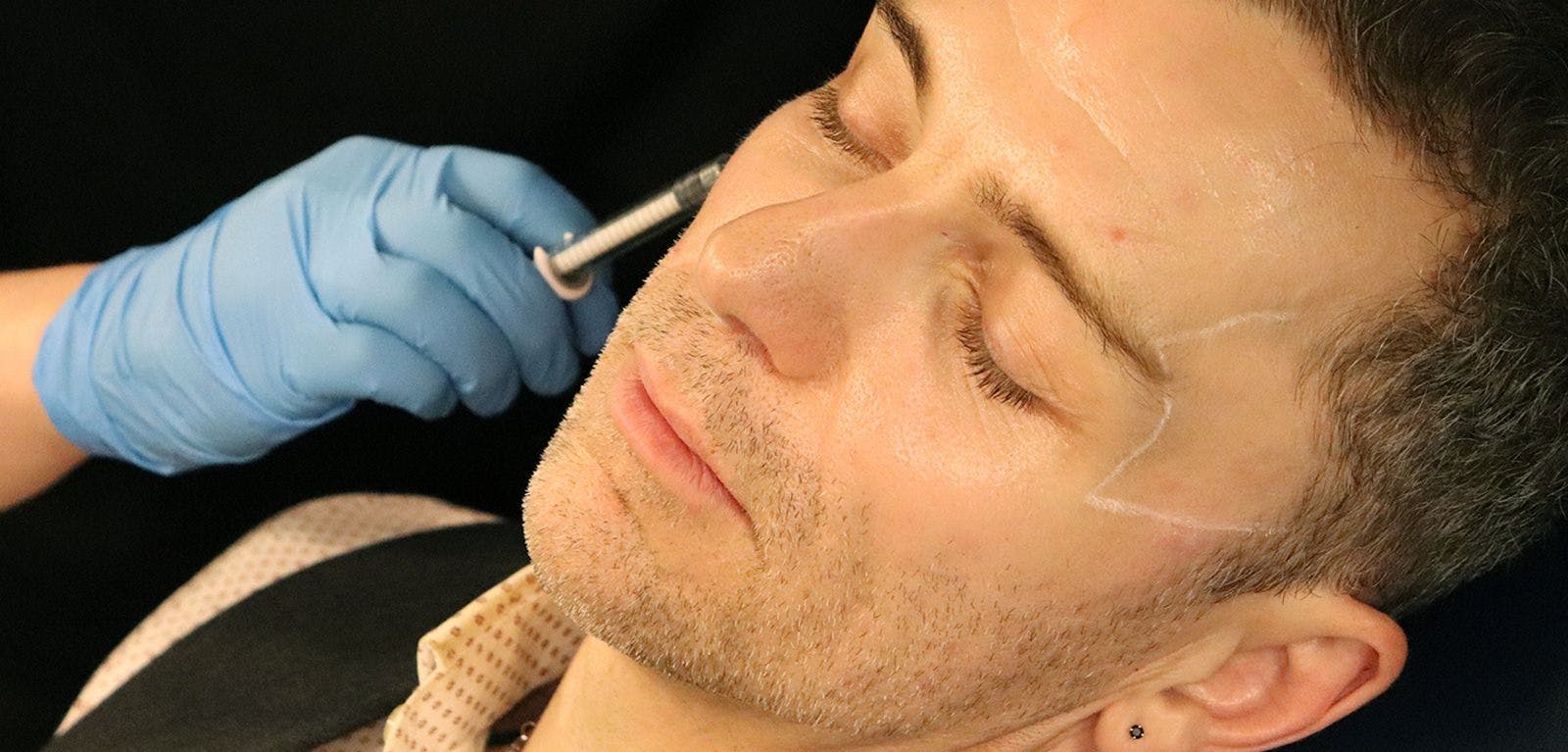Expert Tips On Why And How To Inject Temple Filler

What’s the most appropriate way to inject temple filler? Clinical trainer and aesthetics specialist, Lorraine Guinan, RGN addresses the most frequently asked questions.
Temple fillers are an advanced facial aesthetic treatment most commonly used by more experienced aesthetic practitioners.
The aim is to re-volumise the temple region where it may have hollowed or sunken over time due to facial ageing.

What does temple filler do?
Lorraine explains that “temple filler is used to restore volume and improve the appearance of hollow or sunken temples.
“Hollowing of the temples is an early sign of facial ageing. Restoration of volume to the temples, apart from treating the area itself, can also help with the overall face shape and contour. It can also sometimes help with lifting the eyebrow.”
How do you assess a patient for this treatment?
“To begin with the injector needs to evaluate the degree of volume loss and skin laxity in the temple area. With ageing and volume loss, some areas of the face can become concave leading to shadows or a lack of structural support."
Lorraine goes on to explain that also “the light reflex surrounding the orbit can be lost. This interrupts the smooth transition from the brow to the zygomatic arch. The lateral aspect of the orbital rim can appear more prominent.
“The tail of the brow can also be displaced inferiorly and posteriorly, causing it to appear shorter.”

What are the best temple filler injection techniques?
Lorraine notes that “typically, for temple filler, the technique I use requires a 22G cannula for injecting the more superficial layers. Or you can use a 27G needle if placing the filler on the periosteum.
“Temple filler must be placed carefully and precisely, avoiding the important vessels, the nerves in this area and the close proximity to the orbit. The type and amount of filler depends on the patient’s specific needs, the injector’s preference and the facial layer being treated.
“A high G prime filler is used if injecting deep and medium-low G prime is used if injecting more superficially. Often 0.5mls of filler per side is used in the temple, but the patient may require more and further treatments to achieve the desired results.
"Sometimes a multi-layer approach can be used, treating deeply to the periosteum with a needle, then superficially with a cannula.”
She adds a word of caution, “It’s important for the injectors not to overcorrect this area as this can give undesired outcomes.”
You may also wish to read our article on the Gunshot Technique for temple filler.
The most important step for reducing complication risks
“Good anatomical knowledge of the temple area is important to avoid potentially severe complications. It’s key to be aware of the superficial temporal artery, vein and the middle temporal vein when injecting in this area.
“The temple has complex anatomy with multiple tissue layers. It’s crucial to be cautious when injecting near blood vessels or nerves in this area. Some unwanted temporary bruising and tenderness can occur.
"Significant adverse events can include the possibility of permanent visual loss. However, with proper knowledge of anatomy and practical training, soft tissue fillers can be more safely and reliably used to augment temples.”
Why temple filler is an advanced aesthetic treatment
Lorraine goes on to warn, “Treating the temples with filler is an advanced technique. It’s considered to be one of the more high-risk areas.”
This is because “the anatomy is complex and there are varying techniques used amongst practitioners. These are chosen based on the patient’s concerns in order to achieve good results whilst reducing risk. Therefore, this treatment should be carried out by advanced injectors only. Also, specific training in this area is recommended.”
We touch on temple filler in the eLearning which forms part of our Ofqual-regulated Level 7 Diploma in Botox & Dermal Fillers. However, as with any injectable treatment, we always recommend practical training before adding any new service to your offering.
You should also check with your insurer first to confirm what level of training is required to ensure coverage.
All information correct at the time of publication
Download our full prospectus
Browse all our injectables, dermal fillers and cosmetic dermatology courses in one document
By submitting this form, you agree to receive marketing about our products, events, promotions and exclusive content. Consent is not a condition of purchase, and no purchase is necessary. Message frequency varies. View our Privacy Policy and Terms & Conditions
Attend our FREE open evening
If you're not sure which course is right for you, let us help
Join us online or in-person at our free open evening to learn more
Our Partners














STAY INFORMED
Sign up to receive industry news, careers advice, special offers and information on Harley Academy courses and services

